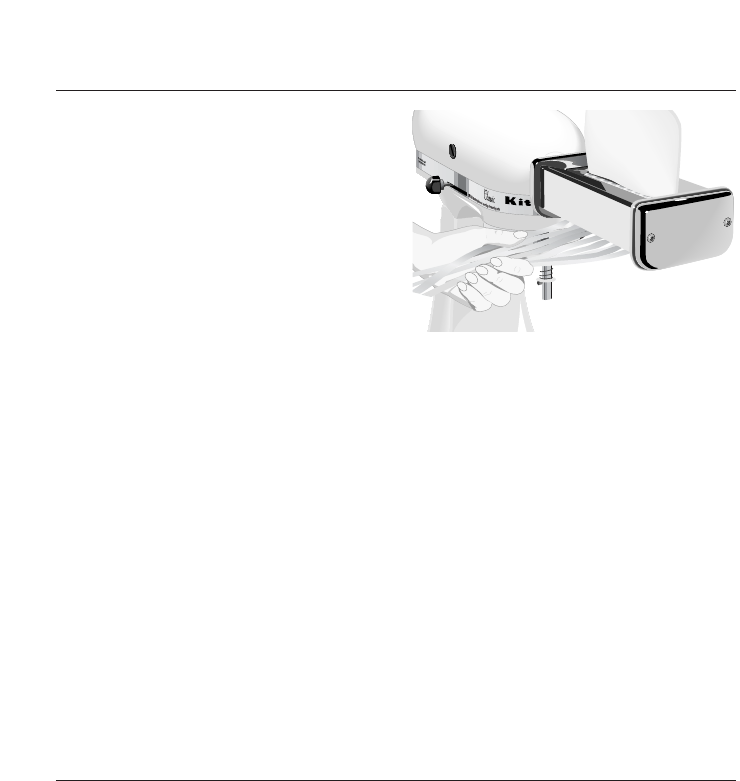
6
Tips for Perfect Pasta
• Good pasta dough is firm and
leathery to touch, but also pliable.
It should never stick to your fingers
or crumble and fall apart. Many
factors, such as humidity, brand of
flour used, and size of eggs, may
affect dough consistency. To test
for correct dough consistency,
pinch a small amount of dough
together after mixing with the flat
beater. If the dough stays together
without sticking to your fingers, it
should work well. It may be
necessary to add a small amount
of flour or water to reach correct
dough consistency.
• Divide sheets of rolled pasta into
halves or thirds before cutting into
fettuccine, spaghetti, or linguine
fini, as they can become quite long
and difficult to manage.
• Some hand separation may be
necessary when cutting wheat or
spinach dough with the fettuccine
or spaghetti cutter. The small
pieces of wheat bran and spinach
are difficult to cut.
•Pastas can be either dried or frozen
for future use. To dry, lay strands of
pasta in a single layer on a towel
or drying rack, and completely air
dry. Store dried pasta in an airtight
container. To freeze, let pasta air-
dry for one hour before freezing in
an airtight container. It is not
necessary to separate strands of
pasta before freezing, just dust
with flour and form into “nests.”
Suggested Roller Settings
Roller Setting Uses
1 or 2 Kneading and thinning dough
3 Thick “kluski”-type egg noodles
4 Egg noodles
4 or 5 Lasagna noodles, fettuccine, spaghetti, and ravioli
6 or 7 Tortellini, thin fettuccine, and linguine fini
7 or 8 Very thin “angel-hair”- type pasta/capellini or
very fine linguine
K
i
t
c
h
e
n
A
i
d
S
t
.
J
o
s
e
p
h
,
M
i
c
h
i
g
a
n
U
S
A
Off Stir 2 4 6 8 10
S
o
lid
S
ta
te
S
p
e
e
d
C
o
n
tro
l


















